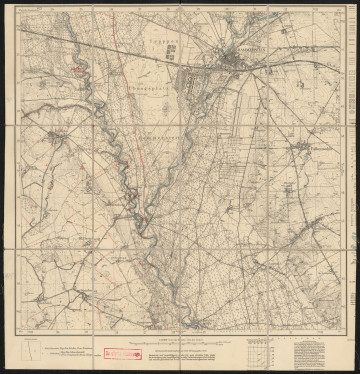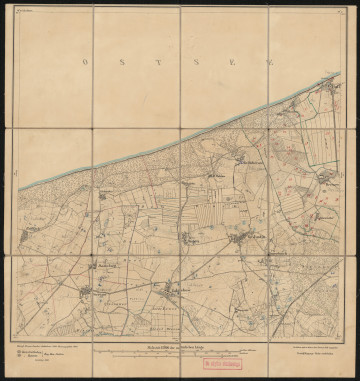
1249 Märkisch Friedland I | 1249 Mirosławiec I
1930 — 1939
National Museum in Szczecin
Part of the collection: Paper money
From mid-1923, foreign currencies and precious metals became the standard of payment in hyperinflation-stricken Germany. Merchants did not want to accept paper marks at the time, especially when paying for food products. Replacement money was treated in the same way, the devaluation of which followed the state currency. The German government decided to initiate currency reform by launching gold bond loans denominated in gold marks and with a dollar conversion rate on August 25 as a substitute for stable value money. However, they proved to be too large and impractical of a denomination, and a month later, percentage bonds were introduced into circulation, whose values: 0.42, 1.05 and 2.10 gold marks ($1/10, $1/4, $1/2 respectively) were more popular for everyday use. Shortly thereafter, on October 26, the Act on Issuing and Repurchase of Substitute Currency of 1922 was amended, making printing permission dependent on providing security for the value of the issue in gold or foreign currencies, leading to a relative stabilization of the value of substitute means of payment. Counting on the benefits of this reform, the Municipal Savings Bank in Białogard (Belgard Sparkasse der Stadt) issued the presented bill worth 10 gold marks ($2 8/21) on November 2. Bills worth 0.5, 1, 2 and 5 gold marks and 10 gold pfennigs were also put into circulation. In Białogard, replacement money of stable value was also issued by the District Savings Bank Board (Belgard Kreissparkasse) and the District Board in conjunction with the District Power Plant Białogard – Słupsk Sp. Akcyjna (Belgard Kreisausschuß des Kreises Belgard und Überlandzentrale Belgard-Stolp A.G.). The poor graphic and colour design of the one-sided printed bill is unsophisticated and resembles inflation issues. Raising the aesthetics, however, would not have changed the reception of these notgelds, since people who were displeased with paper money also regarded bills, even of stable value, with reserve, especially since the Reich Bank and the post office did not accept them. Mieszko Pawłowski
Other names
10 Goldmark, Notgeld, Gutschein
Author / creator
Object type
voucher
Technique
flat printing
Material
paper
Origin / acquisition method
legal transfer
Creation time / dating
Creation / finding place
Owner
Muzeum Narodowe w Szczecinie
Identification number
Location / status

1930 — 1939
National Museum in Szczecin

1926 — 1928
National Museum in Szczecin

1889 — 1890
National Museum in Szczecin
DISCOVER this TOPIC
Museum of King Jan III's Palace at Wilanów
DISCOVER this PATH
Educational path